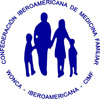Use of psychoactive drugs in an FHS (Family Health Strategy)
Resumo
Introduction: Family Health Strategy targets basic health care. One area of major importance in its routine is mental health, where psychoactive drugs are often prescribed based on individual diagnosis. The study in question is a research on the use of psychopharmaceutical drugs at the Bom Jesus FHS, in Santa Cruz do Sul, a city in the sate of Rio Grande do Sul.
Objective: The research was carried out aiming at quantifying the FHS’s users of psychodrugs, as well as establishing their profile, the association and interaction between such psychoactive drugs and follow up on their treatment through the number of consultations in the past year.
Methodology or experience description: A crosssectional analysis has been done through a reviews of all of the records in the FHS (a total of 3414). From those records, psychoactive drug users were selected and information such as gender, age, accupation, number of medical consultations in the past year and what psychoactive drugs used was collected. The data were analyzed with the aid of SPSS software and presented in the form of charts and graphs:
Results: The study’s corpus is that of 3414 users from the FHS, 9.4% of whom use psychoactive pharmaceutical drugs. Of those, most are females (75.7%) and many are aged over 60 (45.2%). The most used parmaceuticals are antidepressants – mainly fluoxetine, followed by clonazepam, a benzodiazepine.
Conclusions or Hypothesis: As is found in the specialized literature and confirmed in this study, the use of psychoactive drugs is significantly greater in women, and the use of which increases with age, peaking among the elderly population. Such study has shown the importance of follow-up care of psycodrug-using patients, focusing mostly on elderly women, who most use such drugs.
Palavras-chave
Texto completo:
PDF (English)Apontamentos
- Não há apontamentos.
Este periódico é de responsabilidade das associações:
Apoio institucional:







